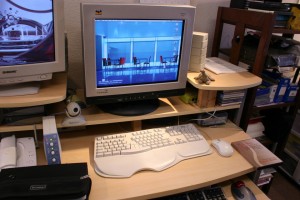If you have “device stigma,” you should get over it – new, relatively low-cost technology may allow you to be independent longer, and/or provide new ways for your caregivers to look out for you while you stay at home longer.
Maybe you are considering a move. Maybe your loved ones are talking about moving you. There are concerns about whether you’re eating well, taking your medications, injuries, illness, wandering, etc. The decision to move out of your home to a nursing home or assisted living facility is a big one, and most people will do anything to avoid “the nursing home.” As we age, we take great comfort in being in familiar surroundings, among our things, our familiar spaces, and close to our friends and family. Whatever the reasons, the transition to a nursing home or assisted living facility may be able to be delayed for some by introducing new technologies that allow older individuals and/or their loved ones more confidence to stay in their homes longer.
Referred to as “connected independence,” the new, relatively low-cost technologies to help people stay in their homes longer are impressive, and they’re working! Popularity is soaring and the Boomers are expected to make them even more so. Depending on the device, monitoring of medication, wandering, activity/inactivity, real-time health information, falls, emergency response systems, and other important safety or health concerns may be able to be accomplished remotely. Through sensors, GPS, voice activation, Bluetooth, mobile devices, smartphone apps, and computer technology, caregiving (even long distance) and independence are made easier.
Insurance and the government, as usual, are behind, so don’t expect to have any of the devices covered by insurance or Medicare. But, for those who can afford them right now, they’ve made an enormous difference in their lifestyles. I expect the reimbursement issues will follow when the cost of the technology is shown to reduce more expensive options for health care like nursing home stays.
Check out the article to find out more: AARP Bulletin March 2014 (“Your Life” section on page 20)
http://pubs.aarp.org/aarpbulletin/201403_OR?pg=3#pg1
This blog is written by Bridget-Michaele Reischl, Attorney DECORO LAW OFFICE, PLLC www.decorolaw.com

